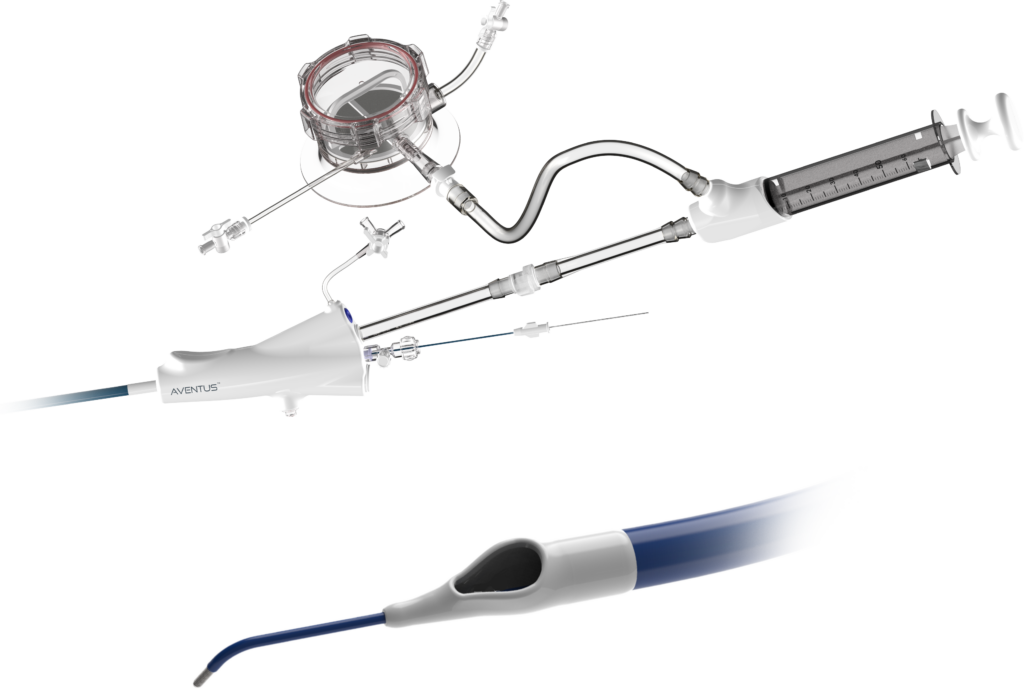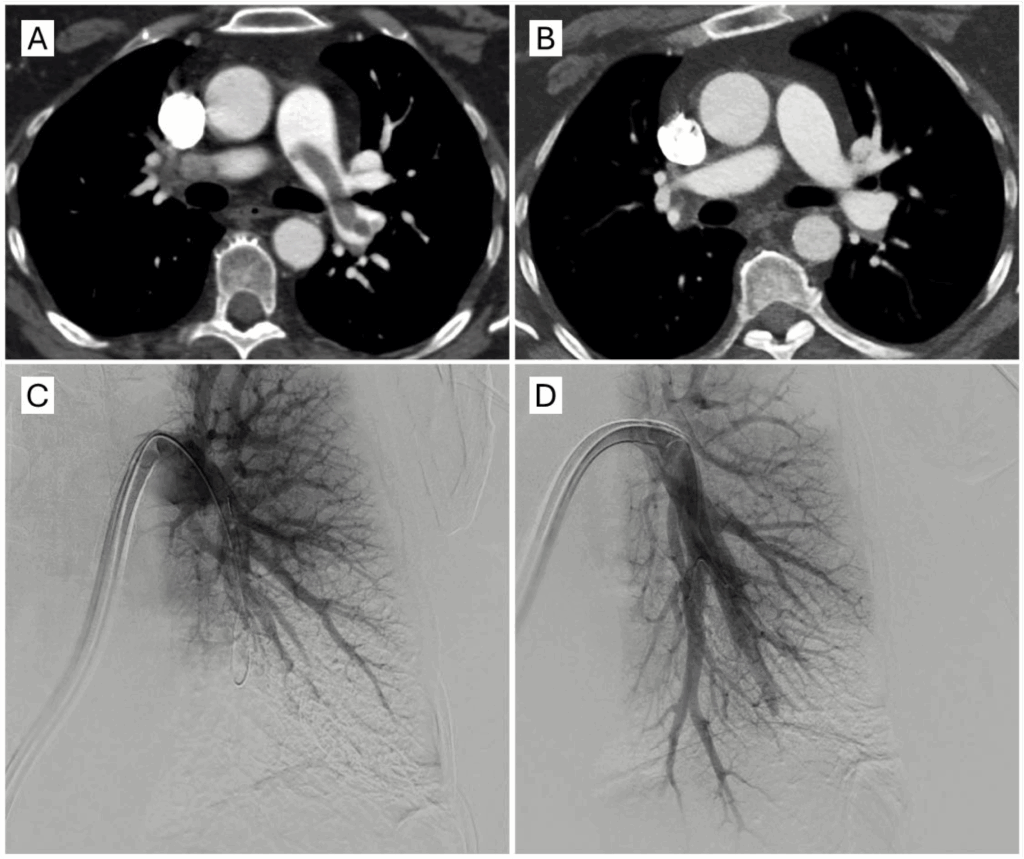
Advancing the Treatment of Pulmonary Embolism
Safe, effective, and efficient, with integrated blood reinfusion


Review ‘Novel Aspiration Thrombectomy and Blood Reinfusion System for Acute Intermediate-Risk Pulmonary Embolism: AVENTUS Trial Results’ in JSCAI.


AVENTUS Trial Overview
Outstanding Clinical Performance in all Key Metrics
Device-related MAEs
Within 48 hours and through 30 days
RV/LV Ratio Reduction
Clot burden reduction
Based on change in refined modified Miller score

- Demonstrated significant improvement in RV/LV ratio and large clot burden reduction

- Trial met both primary safety and efficacy endpoints

- Minimal blood loss facilitated by blood reinfusion features

- Brief post-procedure ICU and total hospital length of stay

Review ‘Novel Aspiration Thrombectomy and Blood Reinfusion System for Acute Intermediate-Risk Pulmonary Embolism: AVENTUS Trial Results’ in JSCAI.

About the Study
Objective: Evaluate the safety and efficacy of the AVENTUS Thrombectomy System for aspiration thrombectomy in subjects with acute intermediate-risk pulmonary embolism.
- Duration of follow-up: 30 days
Study Design

- Prospective, single-arm, multicenter IDE trial

- Conducted at 22 U.S. sites

- Enrolled 120 subjects with acute intermediate-risk PE
Primary Efficacy Endpoint

- Change in RV/LV ratio from baseline (pre-procedure) to 48 hours post-procedure as measured by CTA
Key Eligibility Criteria

- Subjects aged 18 to 80 years old

- Symptom duration ≤ 14 days

- CTA-documented emboli in pulmonary arteries

- RV/LV ratio of ≥ 0.9
Primary Safety Endpoint
Rate of device-related major adverse events (MAEs) within 48 hours of the procedure:

- Death

- Major bleed

- Clinical deterioration

- Pulmonary vascular injury

- Cardiac injury
Baseline Characteristics
87.5% Intermediate/High risk patients
Elevated Biomarkers
About the Study
Evaluate the safety and efficacy of the AVENTUS Thrombectomy System for aspiration thrombectomy in subjects with acute intermediate-risk pulmonary embolism.
Study Design
✔ Prospective, single-arm, multicenter IDE trial
✔ Conducted at 22 U.S. sites
✔Enrolled 120 subjects with acute intermediate-risk PE
Primary Efficacy Endpoint
✔ Change in RV/LV ratio from baseline (pre-procedure) to 48 hours post-procedure as measured by CTA
Key Eligibility Criteria
✔ Subjects aged 18 to 80 years old
✔ Symptom duration ≤ 14 days
✔ CTA-documented emboli in pulmonary arteries
✔ RV/LV ratio of ≥ 0.9
Primary Safety Endpoint
Rate of device-related major adverse events (MAEs) within 48 hours of the procedure:
✔ Death
✔ Major bleed
✔ Clinical deterioration
✔ Pulmonary vascular injury
✔ Cardiac injury
Baseline Characteristics
87.5% Intermediate/High risk patients
Elevated troponins or BN
Significant Improvement in Right Ventricular (RV) Function and Reduction in Clot Burden
RV/LV ratio decrease
48-hour RV/LV diameter ratio dropped significantly, by an average of 0.47 (p<0.0001)
Clot burden reduction
The refined modified Miller score decreased by an average of 35.9%.

Clot Haul

(A) Pre-procedure CT and (B) 48 hours post-procedure CT (C) Left pre-aspiration angiogram (D) Left post-aspiration angiogram. Case images provided by Dr. Samuel Horr (TriStar Centennial Medical Center, Nashville, TN).
Exceptional Safety Results
AVENTUS was Highly Adoptable With Reproducible Outcomes
Diverse Operators
Median Catheter Dwell Time
(Tracking, aspiration, and blood filter/reinfusion)
Minimal Blood Loss: <50mL of Mean Estimated Blood Loss per Patient
Improved Functional & QoL Outcomes With Short Length of Stay
PEmb-QoL
30-day score demonstrated decreased symptoms with a reduction of 25.3 points overall (p<0.0001)
6 Min Walk Distance
At 30 days, subjects exhibited a 132.9-meter increase in 6MWD (p<0.0001)

AVENTUS Trial Overview

The AVENTUS Trial met its primary endpoints, demonstrating both safety and efficacy for the treatment of patients with intermediate-risk pulmonary embolism (PE). Results showed significant improvement in right ventricular (RV) function, reduction in clot burden, minimal blood loss, and shorter ICU and hospital stays, with no device-related adverse events reported.
The AVENTUS trial was conducted under clinicaltrials.gov ID NCT05907564.
